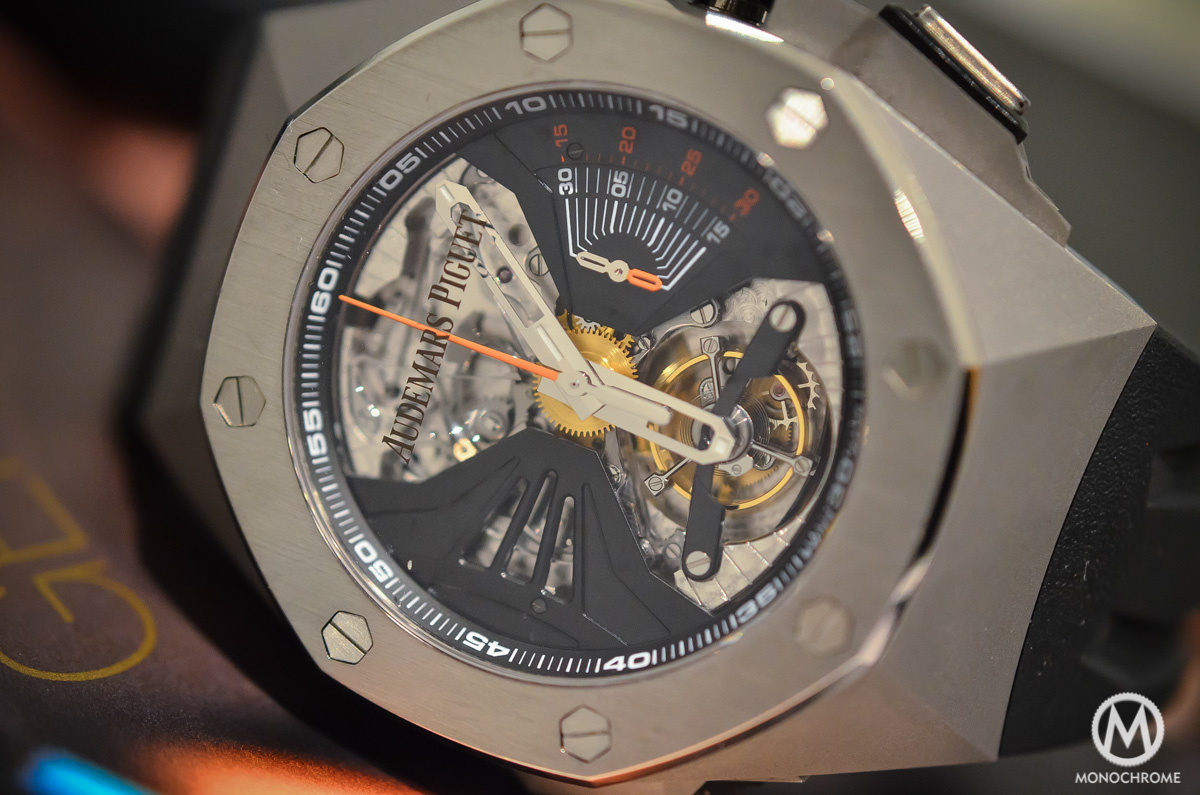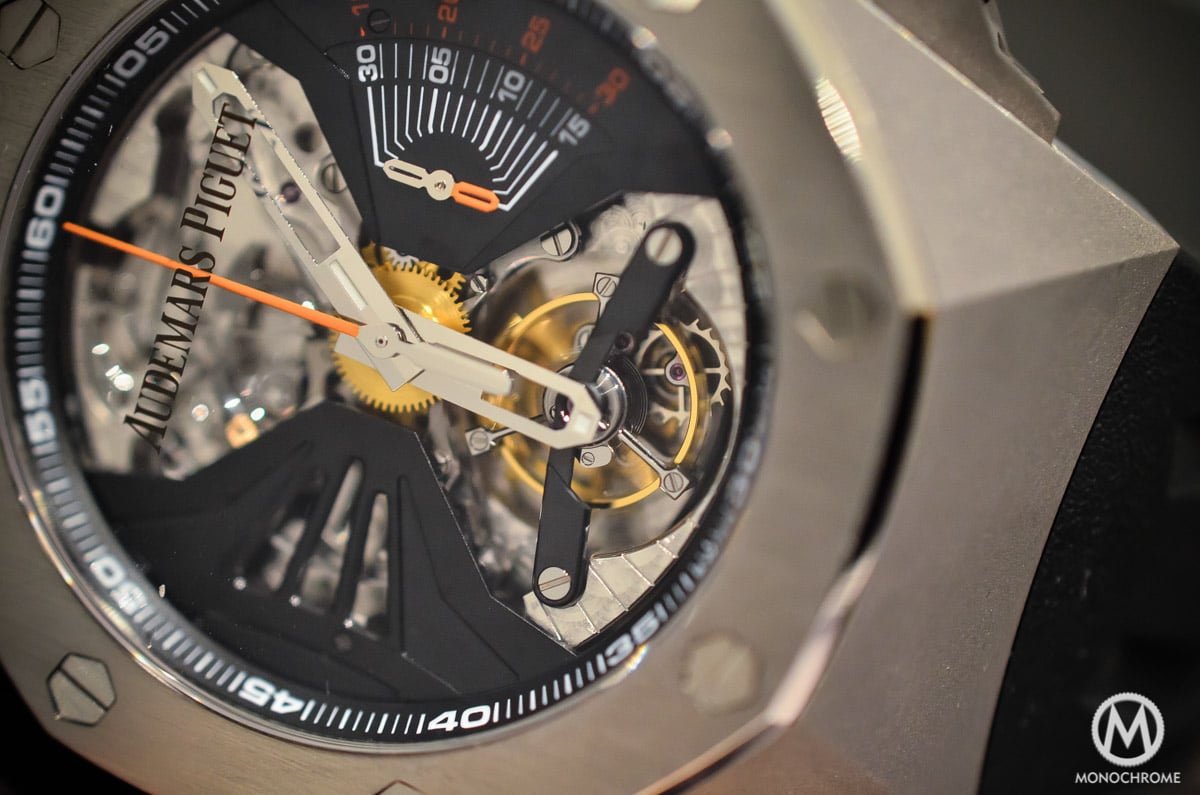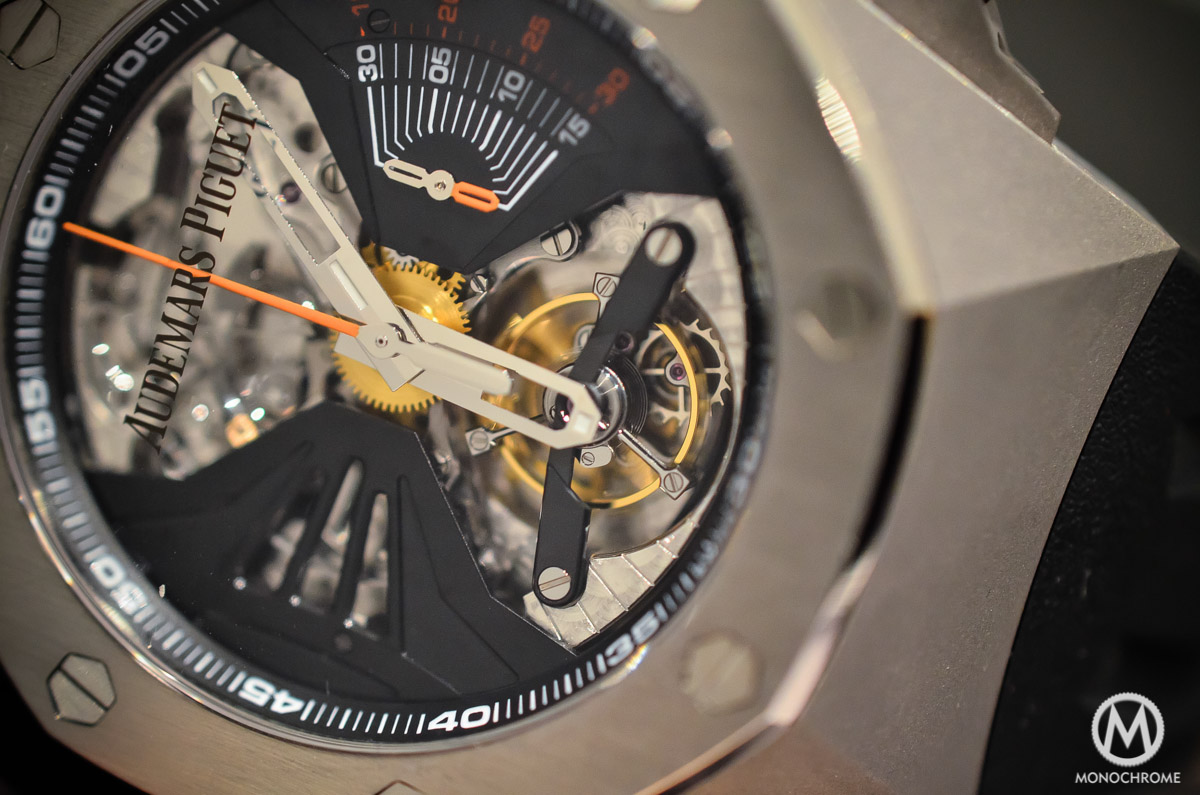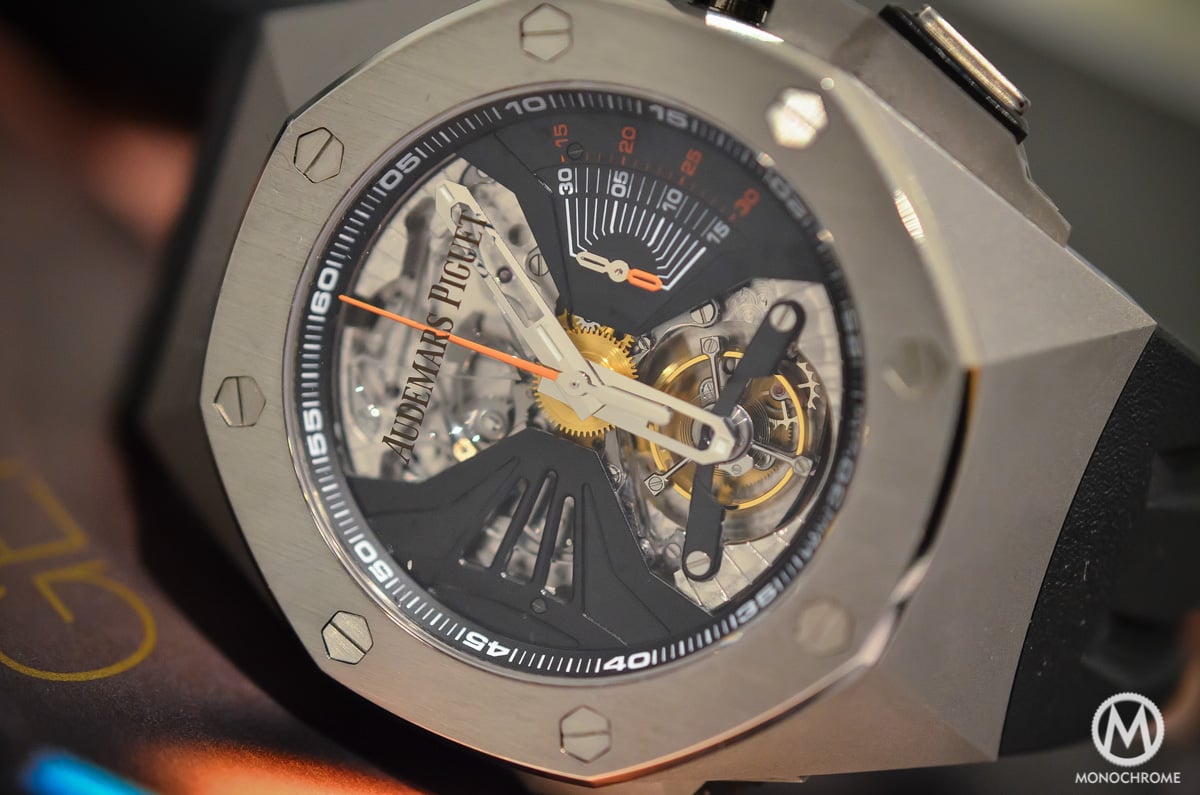SIHH 2015 – Audemars Piguet Royal Oak Concept RD1 Acoustic Research Minute Repeater – How it possibly works?

A few weeks before the 2015 Edition of the SIHH, Audemars-Piguet introduced something highly interesting, a pure concept watch with a single aim: being the Minute Repeater 2.0. based on the now famous Royal Oak Concept case, this watch summarizes 8 years of research and development, all devoted to improve the volume, pitch, tones and harmony of sound of a minute repeater. However AP remains extremely discreet about how this watch works and what are the solutions employed. But, you know us here at Monochrome-Watches, we’ll try to give you some clues after having seen the watch in the ‘metal’.
Audemars-Piguet claims to have the best ever Minute Repeater with this Royal Oak Concept RD1 Acoustic Research. To achieve this result, it took their internal R&D teams (lead by APRP – Audemars Piguet Renaud & Papi) together with the EPFL (Ecole Polytechnique Fédérale de Lausanne) 8 years of hard work. The Audemars Piguet Royal Oak Concept RD1 Acoustic Research focuses on several aspects: water resistance, volume, purity and harmony of sound.

The first axis of research was on water resistance, which seems to be a simple issue to solve. Most of the classical minute repeaters are not resistant against water (or comes with just a very limited protection against water projections). Don’t expect a A. Lange & Sohne Zeitwerk Minute Repeater or a Jaeger-Lecoultre Master Minute Repeater to be your faithful companion into deep salty waters – or even into your bathroom. The reason: sound needs space and openings to be audible. Audemars Piguet however chose to have a watch usable in (almost) every conditions of the daily life and resistant to 20 meters (not what we can call a super water resistance but a least, you can wash your hands with your watch strapped on the wrist). The main problem is that a case that is hermetically closed will considerably reduce the intensity of the sound produced by the chimes.

Because of this water resistance, the sound is now reduced. Solution: create an amplifier. The answer is hidden on the back of the watch – we were of course not allowed to take photos of the back… But that doesn’t prevent us to tell you what we’ve seen. The back of the Audemars Piguet Royal Oak Concept RD1 Acoustic Research hides a double back, an over-layer that we expect to create a sort of resonance chamber that amplify the sound. On the top of the classical caseback sits another case back with openings (juts like the old cricket watches). Another possible explanation could a be that the main caseback could vibrate to amplify the sound even more. The result is a watch that can be heard not only by its wearer but also by people around him, even in a quite noisy room (for those who already experienced classical minute repeater, you can barely hear it when you’re in the middle of a conversation, unless you have it next to your ear).

This goes for the external part of the watch but the minute repeater mechanism itself was also improved, in order this time not gain in volume but to enhance the purity and harmony of the sound. A musical sound is composed of 2 main components: the note itself and the harmonics. The note creates the tone and the harmonics creates the musicality and richness of the sound. That’s the theory. In fact, you also have to consider numerous parasite sounds, coming from the environment or from the work of the mechanics. A minute repeater is composed of multiple gears, levers and springs that move when the mechanism is activated, creating vibrations and thus, parasite noises – these are the sound’s musicality and purity worst enemy.
What AP tends to do here is to reduce these parasite noises by using several (unknown) technics in order to isolate or reduce the sound of these components (it even goes for the balance wheel and escapement mechanism). The less noise the movement itself creates, the purer the sound of the repeater will be. Audemars Piguet developed a new – almost silent – striking mechanism regulator (called governor.) The other technical solution is probably to be found in the gongs and hammers. If a classical minute repeater creates approximately 4 distinct notes and a massive amount of harmonics (that creates a superb musicality), the Audemars Piguet Royal Oak Concept RD1 Acoustic Research creates more notes (around 8 notes) but less harmonics. The sound created is rich because of the additional notes, not because of the harmonics. Thus, it is more pure and clean. Plus, because the notes are less troubled by harmonics, you can easily hear them and the case can more easily amplify a sound that is clean and pure.

Of course, all of these are personal assumptions that should not be considered as official explanations given by Audemars Piguet. We can only guarantee you that the sound created by the Audemars Piguet Royal Oak Concept RD1 Acoustic Research Minute Repeater is extremely loud, very pure and brings a superb musicality. We didn’t talk about the rest of the watch but be aware that is also brings a one-minute tourbillon (located at 6) and a chronograph with 30-minute counter at 3. All of this is cased into a 44mm titanium case and caseback. Oh… and it won’t be produced, so we’re terribly sorry, but you can’t buy this watch.
More (official) explanations here, on the watch’s page on Audemars Piguet’s website.









1 response
Both JLC repeater are waterproof and tested to 3 bars and 5 bars (the ultra thin released in 2014 ).